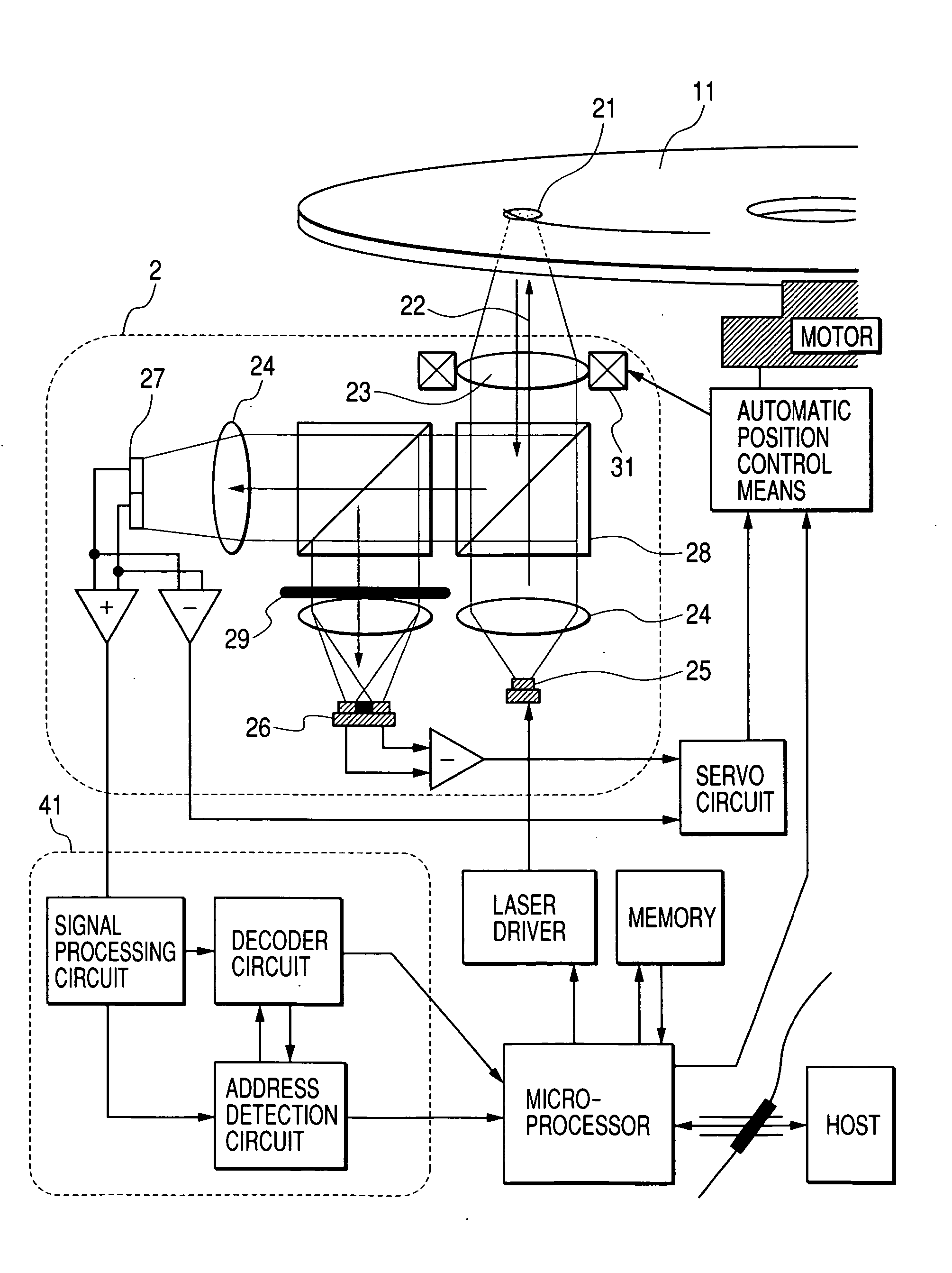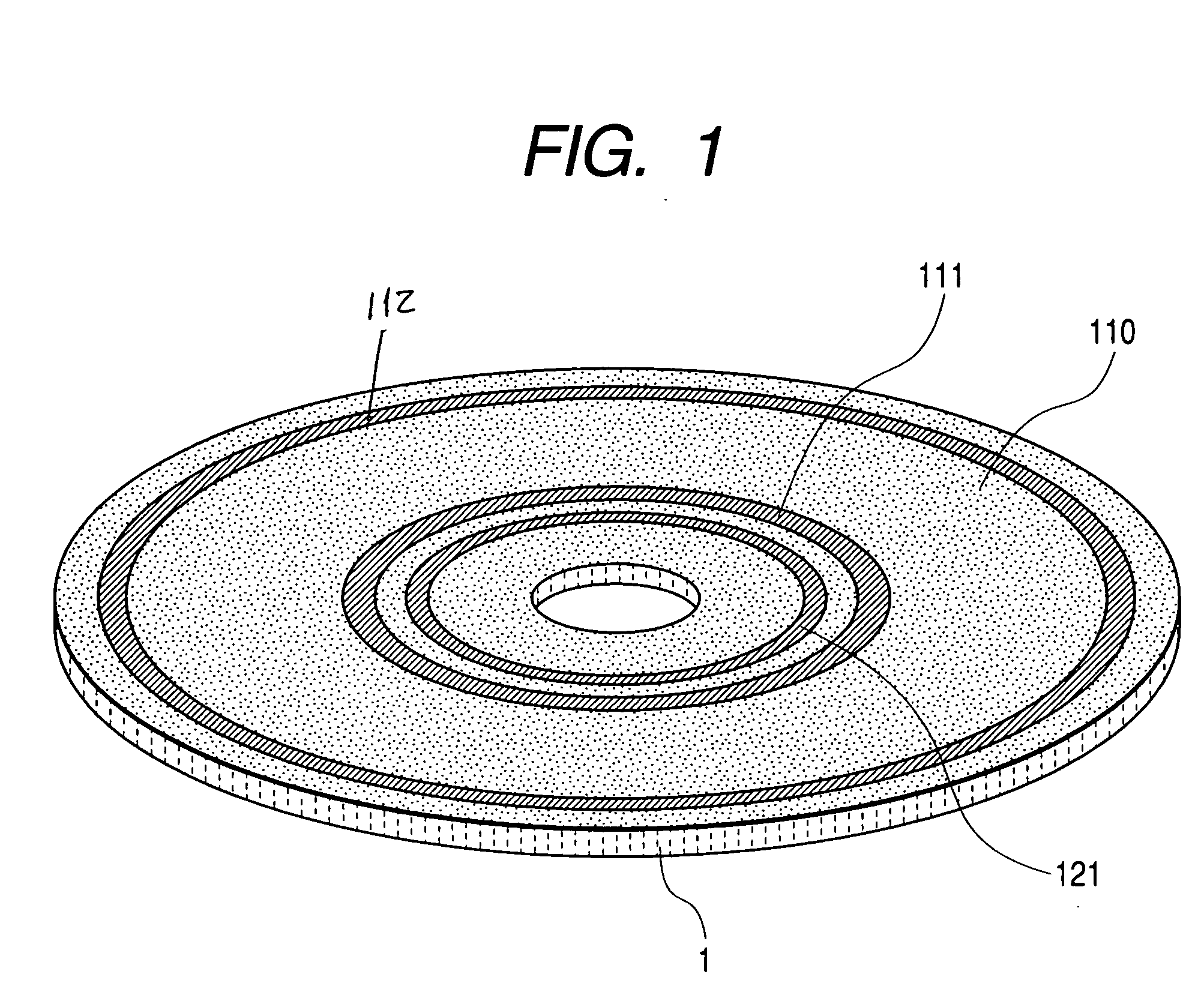Information recording medium and its control method and information recording/reproducing method
a technology of information recording medium and control method, which is applied in the direction of optical recording/reproducing/erasing method, recording signal processing, instruments, etc., can solve the problems of unfavorable disk damage, difficult or impossible to increase the recording speed, and the recording speed of the optical disk is to be further increased, so as to achieve the effect of cheap manufactur
- Summary
- Abstract
- Description
- Claims
- Application Information
AI Technical Summary
Benefits of technology
Problems solved by technology
Method used
Image
Examples
embodiment 1
FIG. 1 is a view showing schematically an arrangement or disposition of recording zones on a recording medium 1 according to a first embodiment of the present invention. Referring to the figure, maximum linear velocities and minimum linear velocities for a radially innermost zone 111 and a radially outermost zone 112, respectively, which belong to a user data area 110 on a disk-like recording medium are recorded in a control data zone 121 which is located at a lead-in portion at the radially inner side of the user data area 110. Some of the recorded contents of the control data are shown in FIG. 8. More specifically, FIG. 8 shows extractively a portion of the control data zone 121 where information concerning the linear velocities mentioned above are set forth or recorded.
Referring to FIG. 8, in a column labeled “RBP”, there are entered relative byte positions (RBPs), wherein each entry is represented by one byte, i.e., eight bits. At the locations where RBP=0, RBP=1 and RBP=2, th...
embodiment 2
An example of the optical recording apparatus according to an embodiment of the present invention will be described by reference to FIG. 14.
FIG. 14 is a block diagram showing schematically a configuration of the optical recording apparatus according to an embodiment of the present invention. Referring to FIG. 14, light emanated from a laser source 25 implemented as a part of an optical head 2 and having a wavelength of about 405 nm is collimated to a substantially parallel optical beam 22 through a collimating lens 24. The optical beam 22 is projected onto an optical disk 11 through an objective lens 23 to form a spot 21 on the optical disk 11. Subsequently, the optical beam 22 reflected from the optical disk 11 is guided to a servo-dedicated detector 26 and a signal detector 27 through the recording medium of a beam splitter 28, a holographic element 29 and others. The signals outputted from the detectors undergo addition / subtraction processings to be transferred to a servo signa...
embodiment 3
FIG. 9 is a schematic cross-sectional view of the recording medium according to a third embodiment of the invention. The recording medium now of concern is a rewritable DVD medium designed for recording / reproducing with a laser beam having a wavelength of 650 nm at NA of 0.6. Referring to FIG. 9, the recording medium includes a subassembly composed of a substrate 131 on which a dielectric layer 132, a phase-change recording layer 133, a dielectric layer 134 and a metal reflective layer 135 are deposited in this order. The subassembly mentioned above is bonded to a dummy substrate 137 by a UV curing resin 136. At this juncture, it is to be mentioned that the thickness of the metal reflective layer 135 is gradually decreased in the direction from the radially innermost zone or location toward the radially outermost zone or location. FIG. 12 is a view for illustrating an example of the method of manufacturing the metal reflective layer 135 by changing the thickness thereof in the manne...
PUM
 Login to View More
Login to View More Abstract
Description
Claims
Application Information
 Login to View More
Login to View More - R&D
- Intellectual Property
- Life Sciences
- Materials
- Tech Scout
- Unparalleled Data Quality
- Higher Quality Content
- 60% Fewer Hallucinations
Browse by: Latest US Patents, China's latest patents, Technical Efficacy Thesaurus, Application Domain, Technology Topic, Popular Technical Reports.
© 2025 PatSnap. All rights reserved.Legal|Privacy policy|Modern Slavery Act Transparency Statement|Sitemap|About US| Contact US: help@patsnap.com



